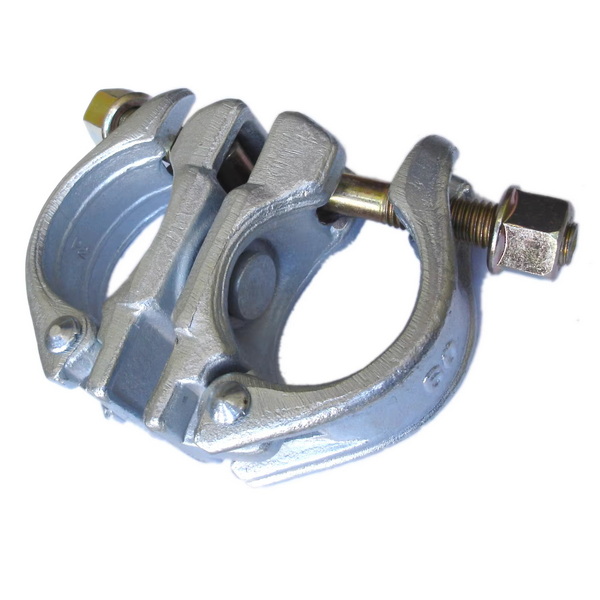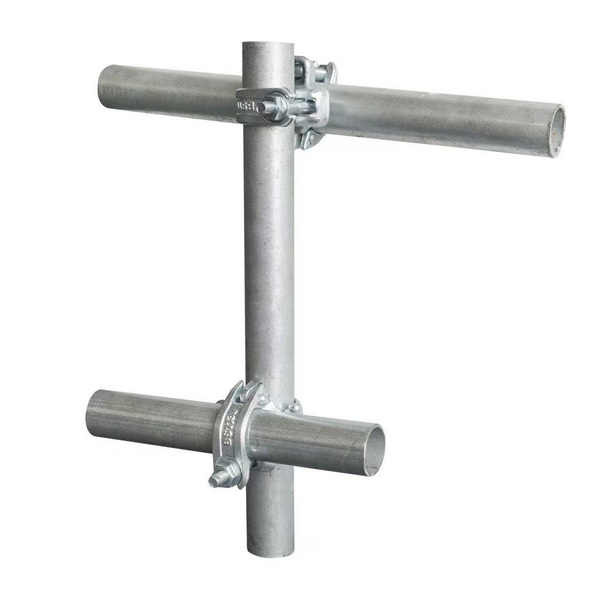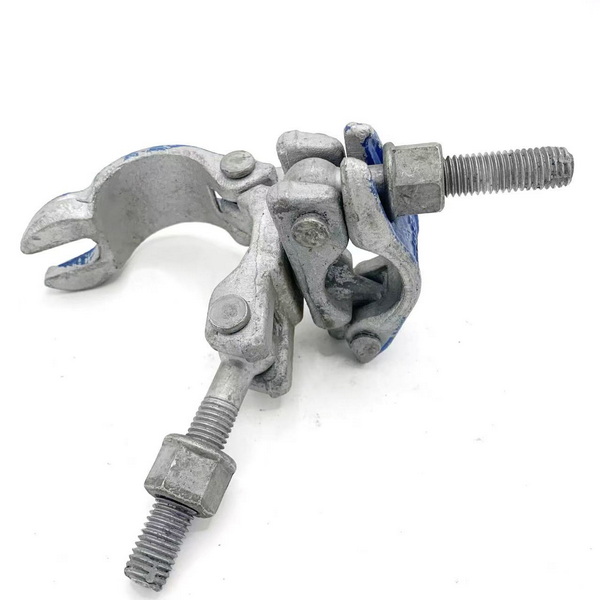Content Menu
● Introduction to Tube and Clamp Scaffolding
● Key Components
● Assembly and Erection Process
● Applications and Versatility
● Safety Considerations
● Maintenance and Storage
● Environmental Considerations
● Conclusion
● FAQ
>> 1. What are the main components of tube and clamp scaffolding?
>> 2. How do you assemble a tube and clamp scaffold?
>> 3. What safety considerations are important for tube and clamp scaffolding?
>> 4. What types of clamps are commonly used in tube and clamp scaffolding?
>> 5. Can tube and clamp scaffolding be customized for different projects?
● Citations:
Tube and clamp scaffolding is a traditional yet versatile scaffolding system widely used in construction, maintenance, and repair projects. It consists of metal tubes and clamps that allow for the creation of structures in various shapes and sizes. This article will delve into the essential parts of tube and clamp scaffolding, their functions, and how they are used in different applications.

Introduction to Tube and Clamp Scaffolding
Tube and clamp scaffolding is known for its adaptability and ease of assembly. The system includes steel or aluminum tubes, typically with diameters ranging from 1.5 to 2 inches, connected by a variety of clamps and fittings. These components enable the scaffold to be customized to fit different job requirements and site conditions.
Key Components
1. Tubes: These are the primary structural elements of the scaffold. They are available in various lengths and materials, such as steel or aluminum, to suit different applications. Steel tubes are more durable and commonly used for heavy-duty projects, while aluminum tubes are lighter and easier to handle, making them ideal for smaller or more complex projects.
2. Clamps: There are several types of clamps used in tube and clamp scaffolding:
- Right Angle Clamps: Used to connect tubes at right angles, providing stability and support for vertical and horizontal structures.
- Swivel Clamps: Allow tubes to be connected at any angle, offering flexibility in scaffold design.
- Beam Clamps: Used for suspending scaffolds from I-beams, often in pairs for added stability.
- Putlog Clamps: Used to connect tubes to bearers, supporting the scaffold boards.
3. Couplers: These fittings connect tubes together securely, ensuring the scaffold's stability and load-bearing capacity. There are two main types of couplers: sleeve couplers and double couplers. Sleeve couplers are used to connect tubes end-to-end, while double couplers connect two tubes side-by-side.
4. Base Plates: Essential for providing a stable foundation for the scaffold, base plates distribute the weight evenly on the ground. They are typically made of steel and come in different sizes to accommodate various tube diameters.
5. Accessories: Include ladders, scaffold boards, and guardrails, which are secured using ring system accessory clamps. Scaffold boards provide a safe working platform, while guardrails ensure worker safety by preventing falls.
Assembly and Erection Process
The assembly of tube and clamp scaffolding involves several steps:
1. Pre-Assembly: Often done on the ground, this involves installing clamps on bearers (members that carry the deck or planking). This step helps streamline the erection process by reducing the amount of work needed at heights.
2. Erection:
- Begin by setting up the base plates and vertical tubes. Ensure these are securely positioned and level.
- Use right angle clamps to connect horizontal tubes to vertical ones, forming the scaffold's frame.
- Install bearers and planks for the working platform. Scaffold boards should be securely fastened to prevent movement.
- Ensure the scaffold is level and plumb throughout the process to maintain stability.
3. Safety Checks: Regular inspections are crucial to ensure the scaffold meets safety standards and can support at least four times the maximum intended load. Checks should include verifying that all connections are secure, there are no damaged components, and the scaffold is properly anchored to the structure if necessary.
Applications and Versatility
Tube and clamp scaffolding is versatile and can be used in a wide range of applications:
1. Construction Projects: Ideal for building structures that require customized scaffolding configurations. It can be adapted to fit around complex architectural features or irregular building shapes.
2. Maintenance and Repair: Useful for accessing hard-to-reach areas in buildings or infrastructure. Its flexibility allows it to be set up in confined spaces or around obstacles.
3. Event Setup: Can be used to create temporary stages or platforms for events. The scaffolding can be configured to support heavy lighting or sound equipment.

Safety Considerations
Safety is paramount when using tube and clamp scaffolding. Key considerations include:
1. Load Capacity: Ensure the scaffold can support at least four times the maximum intended load. This includes the weight of workers, tools, and materials.
2. Regular Inspections: Conduct regular checks to identify any potential hazards or damage. Inspect for rust, corrosion, or bent tubes and clamps.
3. Proper Assembly: Follow established assembly procedures to prevent accidents. Ensure all connections are secure and the scaffold is properly anchored if necessary.
4. Fall Protection: Install guardrails and toeboards to prevent falls. Ensure workers use personal protective equipment (PPE) such as harnesses when working at heights.
Maintenance and Storage
Proper maintenance and storage of tube and clamp scaffolding components are crucial for extending their lifespan and ensuring safety:
1. Cleaning: Regularly clean tubes and clamps to prevent rust and corrosion. Use wire brushes to remove dirt and debris.
2. Storage: Store components in a dry, secure area. Tubes should be stacked horizontally to prevent bending, and clamps should be stored in a way that prevents them from getting damaged.
3. Inspection: Regularly inspect components for damage or wear. Replace any damaged parts before use.
Environmental Considerations
When using tube and clamp scaffolding, it's important to consider environmental factors:
1. Weather Conditions: Ensure the scaffold is secure in windy conditions and protected from extreme weather. Use tie-ins to buildings if necessary.
2. Ground Conditions: Assess the ground for stability before setting up the scaffold. Use base plates that are appropriate for the ground type.
3. Noise and Disturbance: Minimize noise and disturbance to surrounding areas, especially in residential or sensitive environments.
Conclusion
Tube and clamp scaffolding remains a vital tool in the construction industry due to its adaptability and ease of use. Understanding the essential parts and their functions is crucial for safe and effective scaffold assembly. By following proper assembly procedures and safety guidelines, workers can ensure a secure working environment.

FAQ
1. What are the main components of tube and clamp scaffolding?
Tube and clamp scaffolding primarily consists of tubes, clamps (such as right angle and swivel clamps), couplers, base plates, and various accessories like ladders and guardrails.
2. How do you assemble a tube and clamp scaffold?
Assembly involves pre-assembling components on the ground, erecting vertical tubes, connecting horizontal tubes with clamps, and ensuring the structure is level and secure.
3. What safety considerations are important for tube and clamp scaffolding?
Safety considerations include ensuring the scaffold can support at least four times the maximum intended load, conducting regular inspections, and following proper assembly procedures.
4. What types of clamps are commonly used in tube and clamp scaffolding?
Commonly used clamps include right angle clamps for connecting tubes at right angles and swivel clamps for connecting tubes at any angle.
5. Can tube and clamp scaffolding be customized for different projects?
Yes, tube and clamp scaffolding is highly customizable, allowing it to be adapted for various project requirements and site conditions.
Citations:
[1] https://dss.net/tube-clamp/
[2] https://www.youtube.com/watch?v=iUqDWjr6uok
[3] https://blog.csdn.net/weixin_40289064/article/details/79669930
[4] https://www.scaffoldssupply.com/Tube-Clamp-Scaffold-s/189.htm
[5] https://www.youtube.com/watch?v=ZM6Tlh_NAnQ
[6] https://www.bbc.com/learningenglish/chinese/features/q-and-a/ep-200318
[7] https://www.at-pac.com/tube-clamp
[8] https://www.youtube.com/watch?v=veF4uSUtrEY
[9] https://www.sohu.com/a/236188030_498129






















